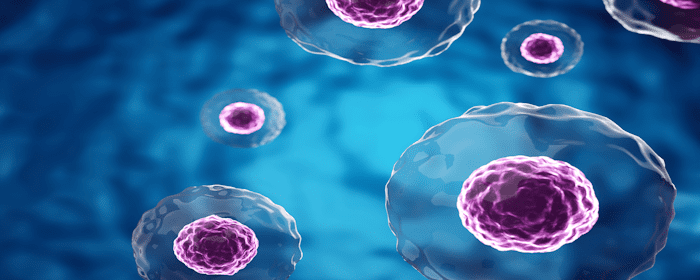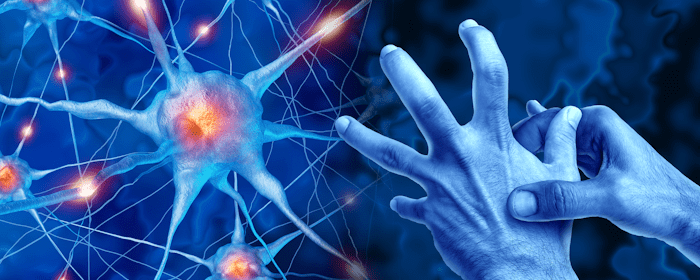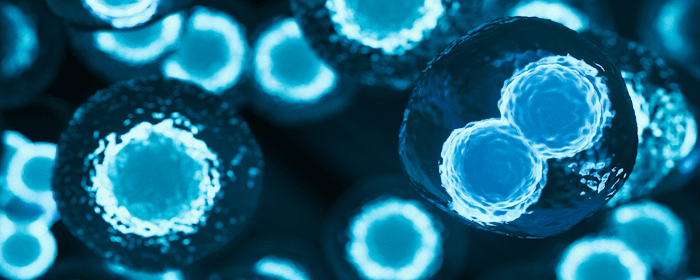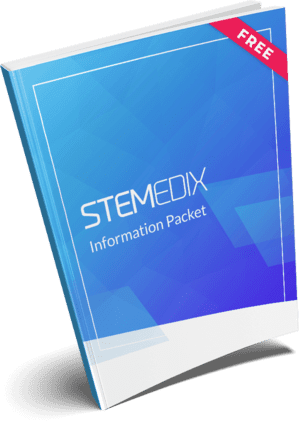
by admin | Apr 24, 2025 | Lupus, Mesenchymal Stem Cells, Regenerative Medicine, Stem Cell Research, Stem Cell Therapy
Systemic lupus erythematosus (SLE) is a complex autoimmune disease that can damage many different parts of the body, including the kidneys, lungs, brain, and blood system. Because it can attack so many organs, it often leads to serious illness and even death.
For many years, doctors have used medications like corticosteroids, cyclophosphamide (CTX), and mycophenolate mofetil (MMF) to control the disease. These treatments have helped patients live longer and have reduced the chances of severe organ failure. However, even with these medications, controlling SLE can still be very difficult for some patients.
Researchers have also developed newer drugs that target specific parts of the immune system, such as rituximab, belimumab, and tocilizumab, among others. While these drugs have improved outcomes for many people, they can sometimes cause serious side effects or lead to the disease coming back once the medication is stopped. Because of these challenges, scientists have been searching for new ways to treat SLE, and one promising option is stem cell therapy.
As part of this review, Yuan et al. explore how stem cells are being used to treat lupus, including the different types of stem cells, the challenges involved, and what the future of treatment may hold.
Hematopoietic Stem Cells and Their Role in Lupus Treatment
Hematopoietic stem cells (HSCs) are the type of stem cells that create all other blood cells. First discovered in 1961, HSCs have become important in treating both blood cancers and autoimmune diseases. In 1997, doctors began using HSC transplants (HSCT) to treat patients with both blood cancers and autoimmune diseases. The results demonstrated that not only did the cancers improve, but the autoimmune symptoms also got better.
Since then, many studies around the world have tested HSCT in people with SLE, and the results have been very encouraging – with patients even showing signs of what researchers call a “fundamental cure,” meaning their disease improved dramatically over the long term.
How Lupus Affects Stem Cells
SLE itself can harm the body’s natural stem cells. Research has shown that people with lupus have lower levels of circulating HSCs and endothelial progenitor cells (which help repair blood vessels). This loss of stem cells may be caused by an increase in programmed cell death, known as apoptosis. As a result, lupus patients may have a harder time repairing blood vessels, leading to problems like atherosclerosis (hardening of the arteries).
Other studies have found that certain changes in the immune system can make stem cells more likely to die off. For example, increased activity in a pathway called mTOR has been linked to poor blood cell production in mice with autoimmune diseases. However, research has also shown the opposite, with lupus conditions causing an increase in stem cells that behave abnormally.
Because of these differences, the authors indicate the need for further research to fully understand how lupus affects stem cells.
Comparing Hematopoietic and Mesenchymal Stem Cells
Because of the challenges with hematopoietic stem cells, researchers have also explored using mesenchymal stem cells (MSCs). MSCs come from bone marrow, fat tissue, or umbilical cord blood, and they have powerful anti-inflammatory and immune-regulating effects.
Clinical studies have shown that about 60% of patients responded well to the treatment, and there were very few serious side effects. This finding opened the door to a whole new field of lupus treatment research.
One significant difference between HSCT and MSC therapy is that MSCs do not require the intense and risky immune system wipe-out that HSCT does. Instead, MSCs can be infused into the body and work to rebalance the immune system naturally. Because of this, MSC therapy is generally safer, has fewer complications, and is more affordable than HSCT.
Another reason MSCs are so promising is that bone marrow MSCs from lupus patients often show structural and functional abnormalities, which means that transplanting healthy MSCs from a donor could help correct some of the immune system issues at the root of the disease.
Animal studies have strongly supported the effectiveness of MSCs in treating lupus, and early clinical trials in humans have shown encouraging results. Phase I and II studies suggest that MSC therapy is both safe and effective for SLE patients, but further larger clinical trials are needed to confirm these findings and to better understand exactly how MSCs help heal the immune system.
The Future of Stem Cell Therapy for Lupus
Stem cell therapy offers exciting new possibilities for patients with SLE who have not had success with traditional treatments. Hematopoietic stem cell transplants have been shown to help many patients, sometimes even achieving long-term remission. However, because of the high risks and costs involved, HSCT is likely to remain a treatment reserved for the most severe and treatment-resistant cases.
Mesenchymal stem cell therapy, on the other hand, appears to offer a safer, more accessible option that could benefit a much larger number of patients. With fewer side effects, lower relapse rates, and easier treatment protocols, MSCs are quickly becoming a major focus of research into better lupus treatments.
At the same time, the authors continue to study exactly how stem cells work to regulate the immune system. They are also working on ways to improve the safety and effectiveness of both HSCT and MSC treatments. According to Yuan et al, goals for the future include finding better ways to prevent infections, lowering relapse rates, and understanding the long-term effects of stem cell therapy. Researchers are also exploring how to personalize stem cell therapies based on each patient’s unique immune system and genetic background, which could lead to even better outcomes.
Yuan et al. conclude that while traditional lupus treatments have made great strides over the past few decades, there is still a significant need for new and better therapies, especially for patients whose disease does not respond to standard medications.
Stem cell therapy, particularly with mesenchymal stem cells, represents a promising new frontier in the fight against lupus. Ongoing research and clinical trials will help clarify how best to use stem cells to treat SLE safely and effectively, offering new hope for people living with this challenging disease.
Source: Yuan X, Sun L. Stem Cell Therapy in Lupus. Rheumatol Immunol Res. 2022 Jul 6;3(2):61-68. doi: 10.2478/rir-2022-0011. PMID: 36465325; PMCID: PMC9524813.

by admin | Apr 17, 2025 | ALS, Alzheimer’s Disease, Neurodegenerative Diseases, Parkinson's Disease, Stem Cell Research, Stem Cell Therapy
Neurodegenerative diseases like Parkinson’s disease (PD), Alzheimer’s disease (AD), and amyotrophic lateral sclerosis (ALS) are among the most challenging medical conditions to treat. These disorders involve the gradual breakdown and loss of neurons in specific areas of the nervous system, leading to symptoms such as memory loss, paralysis, and impaired movement or cognition.
Despite decades of research and billions of dollars in clinical trials, researchers have yet to find a cure for these conditions, and even effective treatments remain limited. As a result, neurodegenerative diseases place a significant emotional, physical, and economic burden on individuals, families, and healthcare systems worldwide.
In this review, Sivandzade et al. summarize the current knowledge of stem-cell-based therapies in neurodegenerative diseases and the recent advances in this field.
The Potential of Stem Cells in Treating Neurodegenerative Disorders
In recent years, regenerative medicine, particularly stem cell therapy, has emerged as an exciting new frontier in the treatment of neurodegenerative diseases. Stem cells have the remarkable ability to become various types of specialized cells in the body. In the context of neurodegenerative diseases, they may be able to repair damaged tissue, replace lost neurons, or create a healthier environment in the brain or spinal cord that helps preserve existing cells.
This unique potential has led researchers to explore whether stem cells could help slow disease progression, reduce symptoms, or even restore lost function in patients affected with these conditions.
Stem Cell Therapy Approaches in Neurological Disorders
Stem cell therapy strategies for neurodegenerative diseases typically fall into two main approaches. The first involves directly replacing the specific types of neurons that are lost during the disease process. For example, researchers aim to generate dopamine-producing neurons for patients with PD or restore damaged motor neurons in people with ALS. The second approach focuses on environmental enrichment, where stem cells are used to support the body’s own repair mechanisms. According to the authors, this could involve delivering neuroprotective growth factors like brain-derived neurotrophic factor (BDNF) or glial cell line-derived neurotrophic factor (GDNF), which help nourish and protect surviving neurons.
Recent research has also explored combining both strategies – using stem cells to replace lost cells while simultaneously enhancing the surrounding environment.
Stem Cell Therapy for Parkinson’s Disease
In Parkinson’s disease, the main issue is the gradual loss of dopamine-producing neurons in a part of the brain called the substantia nigra. This loss leads to symptoms like tremors, muscle rigidity, and slowed movement, usually appearing in people between their 50s and 70s.
Current treatments focus on increasing dopamine levels or using deep brain stimulation to control symptoms. While helpful, these options do not stop or reverse the underlying neuron loss. Stem cell therapy offers a promising alternative by aiming to replace the lost dopamine neurons or protect those that remain.
Recent studies have used embryonic stem cells (ESCs) to produce new dopamine-producing cells that can be transplanted into animal models of PD. These cells have shown the ability to migrate to damaged areas and improve motor function. However, ESCs come with ethical concerns and a risk of tumor formation, which has limited their use in human trials.
Mesenchymal stem cells (MSCs) have also shown potential in PD animal models by helping rebuild damaged dopamine nerve networks. Additionally, induced pluripotent stem cells (iPSCs) – adult cells reprogrammed to act like embryonic stem cells – have recently gained attention because they can be used to generate personalized dopamine-producing neurons without the ethical concerns associated with ESCs. These iPSC-derived neurons have shown promising results in animal models, surviving and integrating into the brain while improving motor symptoms.
Stem Cell Therapy for Alzheimer’s Disease
For patients with Alzheimer’s disease, the situation is more complex. AD is the most common neurodegenerative disease, affecting over 5 million Americans. It leads to memory loss, confusion, impaired judgment, and eventually complete cognitive decline. The disease is marked by the buildup of two harmful proteins in the brain: amyloid-beta, which forms plaques outside neurons, and tau, which forms complex tangles inside them. These protein abnormalities disrupt communication between brain cells and eventually cause them to die. Current medications focus on improving symptoms and slowing progression, but they do not reverse the damage.
Stem cell therapy for AD focuses on restoring lost neurons and improving the brain’s ability to function and heal. Studies using human neural stem cells in animal models of Alzheimer’s have shown that these cells can improve learning and memory, possibly by enhancing synaptic plasticity and increasing the production of proteins involved in cognitive function.
However, challenges remain, including understanding how these stem cells exert their effects and controlling the formation of unwanted cell types. Researchers are currently exploring the use of nerve growth factor (NGF) in combination with stem cells to protect existing neurons and encourage the growth of new ones.
NGF gene therapy has shown promise in early trials and may help amplify the positive effects of stem cell treatment.
Stem Cell Therapy for ALS (Amyotrophic Lateral Sclerosis)
Amyotrophic lateral sclerosis, or ALS, is another devastating condition in which motor neurons in the brain and spinal cord gradually die, leading to muscle weakness, paralysis, and ultimately death, typically within a few years of diagnosis. Most cases are sporadic and occur without a clear genetic cause, though some cases are linked to inherited gene mutations. Because multiple mechanisms may contribute to the disease, including protein misfolding, oxidative stress, and inflammation, it has been extremely difficult to find effective treatments.
Stem cell research in ALS is still in the early stages, but it holds potential. The goal is not necessarily to replace the lost motor neurons – which is extremely difficult – but rather to create a supportive environment that preserves the neurons that remain and slows disease progression.
Some clinical trials have tested the use of MSCs and neural stem cells (NSCs) injected directly into the spinal cord. Results from these early studies suggest that the treatments are safe and may help stabilize function in some patients. In animal models, stem cell transplants have been shown to reduce inflammation, promote motor neuron survival, and improve muscle strength.
As with other neurodegenerative diseases, the success of stem cell therapy in ALS will likely depend on a deeper understanding of disease mechanisms and finding the best ways to target and deliver treatment.
The Future of Stem Cell Therapy for Neurodegenerative Diseases
While stem cell therapy is not yet a viable cure for neurodegenerative diseases, Sivandzade et al. believe it represents one of the most promising paths forward. The ability to regenerate or repair damaged tissue offers hope where traditional therapies have fallen short. As research continues to advance, more clinical trials are likely to explore the safety and effectiveness of these treatments, along with better methods for personalizing therapies and improving the delivery of stem cells to targeted areas within the nervous system.
Source: Sivandzade F, Cucullo L. Regenerative Stem Cell Therapy for Neurodegenerative Diseases: An Overview. Int J Mol Sci. 2021 Feb 22;22(4):2153. doi: 10.3390/ijms22042153. PMID: 33671500; PMCID: PMC7926761.

by admin | Apr 15, 2025 | Mesenchymal Stem Cells, Spinal Cord Injury, Stem Cell Research, Stem Cell Therapy
Spinal cord injury (SCI) is one of the most serious outcomes of spinal trauma. It typically leads to either temporary or permanent loss of sensory, motor, and autonomic nerve functions below the affected area and can significantly impact a person’s quality of life. Worldwide, approximately 10.5 out of every 100,000 people experience SCI. While modern treatments enable 94% of individuals with acute traumatic SCI to survive, long-term survival is often compromised by complications arising after the injury.
In this review, Xia et al. explores the pathophysiological changes that occur following SCI and examines the mechanisms through which MSCs contribute to treatment. The authors also summarize the potential clinical applications of MSCs while addressing the challenges associated with their use and discussing future prospects.
Current Treatment Approaches For SCI
Current therapies for SCI focus on managing the immediate effects of the injury. Standard treatments include stabilizing the spine, surgically decompressing the spinal canal, and initiating rehabilitation programs. These approaches aim to reduce further damage and create conditions that support natural healing processes. However, they do not actively promote the regeneration of damaged nerve cells. The primary goal is to restore neurological function as quickly as possible after addressing the spinal cord compression. Unfortunately, no existing treatment strategies can fully repair damaged nerve cells, leaving an unmet need for innovative therapies.
Primary Spinal Cord Injury
Primary SCI results from direct trauma, such as fractures or dislocations of the vertebrae, which can compress, tear, or even sever the spinal cord. Spinal cord compression is the most common form of primary injury and is often accompanied by damage to blood vessels and the blood-spinal cord barrier (BSCB). The BSCB is a critical structure that maintains the stability and health of the spinal cord by keeping harmful substances out. When the BSCB is compromised, inflammatory molecules and toxic substances infiltrate the injured area, worsening the damage.
Secondary Spinal Cord Injury
Secondary SCI involves a series of biological processes that start within minutes of the initial injury. These changes occur in three overlapping phases: acute (within 48 hours), subacute (48 hours to two weeks), and chronic (lasting up to six months). Secondary injuries can exacerbate the damage caused by the primary injury and often lead to permanent complications.
One of the first effects of secondary SCI is the disruption of the blood supply to the spinal cord, which causes further cell death. As spinal cord cells are destroyed, they release molecules that trigger inflammation. This inflammatory response attracts immune cells to the injury site, which, in turn, release substances that cause additional damage. Neutrophils, a type of immune cell, arrive within an hour of injury and persist for several days, contributing to the worsening of the injury by releasing harmful substances like reactive oxygen species.
The Role of Mesenchymal Stem Cells in SCI
In recent years, mesenchymal stem cells (MSCs) have emerged as a promising option for treating SCI. MSCs are a type of stem cell capable of self-renewal and differentiation into various cell types, making them suitable for tissue repair and regeneration. These cells can be derived from multiple sources, including bone marrow, fat tissue, umbilical cords, and amniotic fluid. MSCs are relatively easy to isolate and store, and their use does not raise significant ethical concerns.
Types of MSCs
The three main types of MSCs used in clinical practice are bone marrow-derived MSCs (BMSCs), adipose-derived MSCs (AD-MSCs), and human umbilical cord-derived MSCs (HUC-MSCs). Each type has unique advantages:
- BMSCs: These cells can differentiate into various tissue types, such as bone, cartilage, and nerve cells. They are effective at reducing inflammation and releasing factors that support nerve regeneration.
- AD-MSCs: Sourced from fat tissue, these cells are easier to obtain in large quantities without causing significant harm. They promote angiogenesis (the formation of new blood vessels) and wound healing by releasing growth factors and other molecules.
- HUC-MSCs: These cells have the highest capacity for proliferation and differentiation. They are smaller in size, allowing them to pass through the BSCB more easily, and they do not pose a risk of fat or vascular embolism.
How MSCs Assist in Treatment of SCI
According to the authors, MSCs offer multiple benefits for SCI treatment, including:
- Immunomodulation: MSCs regulate the immune response at the injury site by interacting with immune cells and releasing anti-inflammatory molecules. This helps reduce inflammation, which is a key factor in secondary injury.
- Neuroprotection and Regeneration: MSCs release neurotrophic factors, such as nerve growth factor (NGF) and brain-derived neurotrophic factor (BDNF), which promote the survival and regeneration of nerve cells. They also inhibit glial scarring, a process that can block nerve regeneration.
- Angiogenesis: MSCs secrete vascular endothelial growth factor (VEGF) and other molecules that encourage the formation of new blood vessels. This improves blood flow to the injured area and helps restore the damaged BSCB.
- Exosome Production: MSCs release exosomes, small vesicles that carry proteins and genetic material to the injury site. These exosomes play a crucial role in reducing inflammation, promoting cell repair, and improving overall tissue recovery.
Future Directions
MSC therapy holds significant promise for improving outcomes in SCI patients. Preclinical studies have demonstrated the ability of MSCs to restore motor function in animal models. In clinical settings, MSCs have shown potential in improving sensory and motor function and aiding bladder control in patients with SCI. However, further research is needed to refine the therapy and address existing challenges.
Mesenchymal Stem Cells: A Promising Path for Spinal Cord Injury Treatment
SCI is a complex condition with devastating consequences for those affected. Current treatments aim to stabilize the injury and create conditions for natural healing but fall short of promoting nerve regeneration. MSCs offer a new avenue for SCI treatment by reducing inflammation, supporting nerve cell regeneration, and improving blood flow to the injured area. While challenges remain, the authors conclude that the advancements in MSC research suggest a bright future for their use in SCI therapy. With continued investigation, MSCs has the potential to become a cornerstone of regenerative medicine for SCI patients.
Source: Xia Y, Zhu J, Yang R, Wang H, Li Y, Fu C. Mesenchymal stem cells in the treatment of spinal cord injury: Mechanisms, current advances and future challenges. Front Immunol. 2023 Feb 24;14:1141601. doi: 10.3389/fimmu.2023.1141601. PMID: 36911700; PMCID: PMC9999104.

by admin | Apr 8, 2025 | Mesenchymal Stem Cells, Parkinson's Disease, Regenerative Medicine, Stem Cell Research, Stem Cell Therapy
Parkinson’s disease (PD) is a neurodegenerative disorder affecting millions worldwide, causing debilitating symptoms such as tremors, rigidity, and difficulty walking. Existing treatments primarily manage symptoms without addressing the underlying causes, highlighting the need for more effective therapeutic approaches. Mesenchymal stem cell (MSC) therapy has emerged as a promising option, demonstrating potential neuroprotective, anti-inflammatory, and regenerative benefits.
As part of this review, Tambe et al. examine preclinical and clinical evidence on MSCs and their derivatives, including secretomes and exosomes, in PD management. The authors also analyze challenges and limitations of each approach, including delivery methods, timing of administration, and long-term safety considerations.
The Growing Challenge of Parkinson’s Disease
PD, along with other age-related diseases like Alzheimer’s and stroke, is becoming more prevalent due to increased life expectancy. The disease affects 2–3% of individuals over 65, and by 2040, the number of people living with PD is expected to double. In 2019, PD caused the loss of 5.8 million disability-adjusted life years (DALYs), a significant rise from 2000.
PD symptoms include postural instability, muscle hypertonia, bradykinesia, resting tremor, and cognitive and language abnormalities, all of which negatively impact the quality of life. PD is diagnosed based on motor symptoms, but non-motor symptoms also contribute to disability.
Parkinson’s disease primarily results from the accumulation of α-synuclein and a depletion of dopamine due to neuronal loss in the substantia nigra. It also involves disruptions in multiple pathways, including α-synuclein proteostasis, mitochondrial dysfunction, oxidative stress, and neuroinflammation.
Current Treatments for Parkinson’s Disease
While there is no cure for PD, current symptomatic treatments include levodopa, dopamine agonists, MAO-B inhibitors, COMT inhibitors, deep brain stimulation, and lesion surgery. However, these therapies are limited and do not address the underlying causes of the disease.
Newer interventions like stem cell therapy, neurotrophic factors, and gene therapy aim to address the root causes and potentially slow or stop disease progression.
Cell-based Therapies for Parkinson’s Disease
Cell-based therapies are gaining attention as potential treatments for PD due to their ability to slow disease progression and replace lost dopamine production. Several cell sources are being researched for their therapeutic potential, each with specific advantages and disadvantages.
Mesenchymal stem cells (MSCs) are particularly promising due to their unique properties, including self-renewal and multi-potent differentiation potential. MSCs can differentiate into various cell types, including neuronal-like cells, and exhibit therapeutic effects through both cellular differentiation and the paracrine action of secreted growth factors.
Properties of Mesenchymal Stem Cells (MSCs)
MSCs are plastic-adherent cells capable of self-renewal and differentiation into various lineages, including neurons, adipocytes, osteoblasts, chondrocytes, and endothelial cells. This versatility makes MSCs an attractive option for treating PD.
MSCs also have the potential to exert therapeutic effects through the secretion of factors that promote cell survival, tissue regeneration, and anti-inflammatory actions. In addition to their ability to differentiate into mesodermal lineages, MSCs can produce secretomes and exosomes, which are small vesicles containing proteins, RNA, and other molecules that have demonstrated the ability to influence surrounding cells.
Therapeutic Success of MSCs in PD Management
Preclinical studies on MSCs and their derivatives, including secretomes and exosomes, have shown promising results in PD animal models. MSCs may promote the survival of dopamine-producing neurons and protect against neurodegeneration. Their secretomes, which contain bioactive molecules, can modulate inflammation and stimulate tissue repair. Exosomes, which are extracellular vesicles derived from MSCs, have been shown to improve neuronal function and survival in PD models. These findings suggest that MSC-based therapies could offer a novel approach to managing PD, potentially slowing disease progression and improving motor and cognitive symptoms.
Alternative Delivery Methods for MSC Therapy
One of the significant challenges in MSC therapy for PD is the delivery of these cells to the brain, particularly through the blood-brain barrier (BBB), which restricts the entry of most drugs.
Traditional delivery methods, such as intravenous, intracerebral, and intramuscular routes, have limitations in terms of efficacy and invasiveness.
Recent research has explored intranasal delivery of MSCs and their derivatives as a promising alternative. Intranasal administration could allow MSCs and their secretomes to bypass the BBB, delivering therapeutic agents directly to the central nervous system with minimal invasiveness.
The Future of MSC Therapy for Parkinson’s Disease
MSC-released exosomes and extracellular vesicles are gaining attention as potential treatments for PD due to their improved ability to cross the BBB and target specific cells. These vesicles can transport proteins, growth factors, microRNAs, and other bioactive molecules to recipient cells, potentially enhancing the therapeutic effects of MSCs.
Intranasal delivery of MSCs and their exosomes is an exciting area of research, offering a less invasive method for delivering therapy directly to the brain. This approach could lead to improved outcomes in PD management, especially if combined with other therapies that address the underlying causes of the disease.
Tambe et al. conclude that MSC therapy and its derivatives, such as secretomes and exosomes, hold significant promise for the treatment of Parkinson’s disease. However, challenges such as MSC heterogeneity, delivery methods, and long-term safety must be addressed before MSC-based therapies can become a mainstream treatment for PD.
Source: Tambe P, Undale V, Sanap A, Bhonde R, Mante N. The prospective role of mesenchymal stem cells in Parkinson’s disease. Parkinsonism Relat Disord. 2024 Oct;127:107087. doi: 10.1016/j.parkreldis.2024.107087. Epub 2024 Aug 10. PMID: 39142905.

by admin | Apr 3, 2025 | Back Pain, Chronic Pain, Stem Cell Research, Stem Cell Therapy
Chronic low back pain is a widespread issue, affecting over 600 million people globally. It is a leading cause of disability, with significant social and economic consequences. In the United States alone, nearly 27 million adults experience back problems, with approximately 19 million seeking treatment. Discogenic lower back pain, which originates from the intervertebral discs, is the most common cause of this condition, accounting for about 39% of cases. Current treatment methods include conservative approaches, surgical procedures, and minimally invasive interventional techniques.
In this study, Navani et al. aimed to compare the safety and effectiveness of PRP and BMC injections for treating chronic low back pain against a control group. The author’s also sought to measure patient satisfaction and monitor the need for further medical intervention, such as hospitalization, emergency room visits, or spinal surgery.
Understanding Intervertebral Disc Degeneration
The intervertebral disc (IVD) is a crucial structure within the spine that helps absorb shock and provides flexibility. It consists of a central area called the nucleus pulposus, which is surrounded by the annulus fibrosus. The disc is located between cartilaginous endplates that regulate metabolism within the IVD. The disc’s central area is characterized by low oxygen levels and a hypoxic environment, which limits the ability for natural cellular repair.
Degeneration of the intervertebral disc, known as intervertebral disc degeneration (IDD), occurs when there is an imbalance between the disc’s ability to regenerate and the breakdown of its structure. Factors such as aging, disease, or injury can speed up the degeneration process, leading to chronic low back pain. Changes in the structure of proteins and collagen within the disc play a significant role in this degeneration, leading to reduced nutrient exchange and increased acidity within the disc, which further hampers cellular repair.
The Role of Inflammation and Pain
When the intervertebral disc begins to degenerate, it creates an environment that encourages inflammation. The disc becomes populated with proinflammatory substances, such as tumor necrosis factor (TNF) and various interleukins, which hinder the disc’s ability to repair itself. These inflammatory molecules also increase the production of enzymes that break down the disc’s structure, causing further damage. Inflammation not only contributes to the physical degradation of the disc but also sensitizes nerve fibers, leading to increased pain.
New Regenerative Treatments: PRP and BMC
Recent advancements in regenerative medicine have introduced novel treatments aimed at healing the degenerated disc rather than simply managing symptoms. Two promising approaches involve using the patient’s own biological materials: platelet-rich plasma (PRP) and bone marrow concentrate (BMC).
- Platelet-Rich Plasma (PRP): This therapy involves extracting a small amount of the patient’s blood, processing it to concentrate the platelets, and then injecting it directly into the degenerated disc. Platelets release growth factors and other bioactive substances that promote tissue healing, reduce inflammation, and encourage new tissue growth.
- Bone Marrow Concentrate (BMC): BMC is obtained by collecting bone marrow from the patient and concentrating it to enrich stem cells and other regenerative cells. These cells have the ability to differentiate into disc-like cells and release anti-inflammatory substances. The use of BMC aims to support the repair of the disc by promoting the formation of new extracellular matrix and reducing inflammation.
Results and Findings
Navani et al.’s showed significant improvement in pain levels and functionality for patients who received PRP or BMC treatments compared to those who did not. Both PRP and BMC therapies were effective in reducing pain, improving function, and enhancing quality of life over a 12-month period. Although there was no significant difference in outcomes between PRP and BMC, both treatments outperformed the placebo. No complications or adverse effects were reported during the study, and none of the participants required surgery, emergency care, or hospitalization related to their treatment.
Limitations of the Study
The study had some limitations, including a small number of participants and variability in the concentration of cells used in the BMC treatments. The differences in harvesting techniques, participant characteristics, and clinical settings may have influenced the results. Additionally, the study’s open-label design could have introduced bias in reporting outcomes.
Factors Influencing Treatment Success
The effectiveness of PRP and BMC treatments can be influenced by several factors, such as the method used to collect bone marrow, the equipment used, and the individual characteristics of the patient, including age, gender, and overall health. Variability in the number of regenerative cells collected may impact the treatment’s ability to repair the disc.
Future Research Directions
More research is needed to determine the optimal number of cells for BMC treatments and to better understand how different biological components within PRP and BMC contribute to the healing process. Exploring multi-targeted approaches that address various structures in the spine, such as facet joints and ligaments, may also enhance treatment outcomes for chronic low back pain.
PRP and BMC for Chronic Low Back Pain
PRP and BMC represent promising regenerative treatment options for chronic low back pain. They aim to repair the damaged intervertebral disc and provide relief without the need for invasive surgical procedures. While both therapies show significant potential, the authors indicatefurther studies are needed to refine the techniques, understand the variability in treatment responses, and establish best practices for their use.
Source: Navani A, Ambach M, Calodney A, Rosenthal R, Li G, Mahoney CB, Everts PA. The Safety and Effectiveness of Orthobiologic Injections for Discogenic Chronic Low Back Pain: A Multicenter Prospective, Crossover, Randomized Controlled Trial with 12 Months Follow-up. Pain Physician. 2024 Jan;27(1):E65-E77. PMID: 38285032.

by admin | Mar 27, 2025 | Mesenchymal Stem Cells, Spinal Cord Injury, Stem Cell Research, Stem Cell Therapy
Spinal cord injury (SCI) is a devastating condition that causes severe nerve damage, leading to impaired movement, sensation, and bodily functions. The injury sets off a series of damaging processes, including excessive inflammation, loss of essential nutrients, and scar tissue formation.
These factors prevent the regeneration of nerve cells, making recovery difficult. Traditional treatments provide limited improvement, but recent research by Lui et al. suggests that mesenchymal stem cells (MSCs) offer hope for patients with SCI.
How SCI Disrupts the Microenvironment
Following SCI, the body experiences a host of negative effects. Initially, the injury causes direct damage to nerve cells, leading to inflammation and the release of harmful substances.
The body’s attempt to repair the damage often backfires, as excessive inflammation worsens tissue destruction and inhibits nerve regeneration. Additionally, the blood-spinal cord barrier (BSCB) becomes compromised, allowing immune cells to flood the injured site.
These immune cells produce harmful molecules like reactive oxygen species (ROS) and cytokines, further aggravating the damage.
The prolonged inflammation creates a hostile environment that prevents new nerve growth and leads to the formation of scar tissue that blocks potential regeneration.
The Role of MSCs in Repairing the Spinal Cord
The ability of MSCs to repair spinal cord injuries (SCI) lies in their powerful secretions of bioactive molecules, which help regulate inflammation, promote nerve cell survival, and enhance tissue repair.
MSCs suppress harmful immune responses by decreasing the activity of pro-inflammatory cells like T-cells and macrophages while promoting anti-inflammatory pathways to minimize further nerve damage. They also release neurotrophic factors that nourish and support nerve cells, encouraging the survival and growth of new neurons to improve recovery.
Additionally, MSCs help prevent the formation of dense glial scar tissue, which can obstruct axon regrowth, by regulating proteins like MMP-2 and BDNF that break down scar tissue and create space for new nerve connections. Furthermore, MSCs contribute to angiogenesis, promoting blood vessel growth to ensure that the injured site receives adequate nutrients and oxygen for healing.
Optimizing MSC Therapy for SCI
To ensure MSC therapy is effective for SCI treatment, the authors call for additional research to determine the most efficient timing, dosage, and delivery method.
Timing for MSC Transplantation
Studies suggest that MSCs work best when introduced during the subacute phase (approximately two weeks after injury). This timing allows MSCs to reduce inflammation while the injury is still healing. If administered too early, the highly inflammatory environment may kill MSCs before they can have a therapeutic effect. If given too late, scar tissue may already be well established, limiting their benefits.
Optimal Dosage
According to Liu et. al, research on animals suggests that higher doses of MSCs (greater than one million cells) lead to better functional recovery.
However, an excessively high dose might provoke an unwanted immune response. In humans, doses typically range from 10 to 100 million cells, though further research is needed to determine the optimal amount.
Optimizing MSC Delivery for Spinal Cord Repair
MSCs can be delivered in different ways. Intravenous (IV) injection is the least invasive, but many cells get trapped in organs like the lungs before reaching the spinal cord. Direct injection into the injury site is more targeted but carries risks of additional damage. Intrathecal injection (into the spinal fluid) is a promising middle ground, as it allows MSCs to circulate in the cerebrospinal fluid and reach the injury without additional trauma.
Advancing MSC Therapy for Spinal Cord Injury: Challenges and Future Prospects
Although MSC therapy holds great promise, several challenges remain before it can become a routine treatment for SCI. Researchers need to refine techniques for improving MSC survival, homing (their ability to find the injured site), and integration into the spinal cord. Scientists are also exploring genetic modifications and biomaterial scaffolds to enhance MSC effectiveness. Additionally, large-scale clinical trials are necessary to confirm safety and efficacy in human patients.
In the future, personalized MSC therapy – where treatment is tailored to each patient’s specific injury and biological factors – could revolutionize SCI treatment.
Liu et al. conclude that ongoing advancements in stem cell research, MSC transplantation has the potential to improve the quality of life for SCI patients by restoring lost function and promoting recovery in ways that were once thought impossible.
Source: Liu, Y., Zhao, C., Zhang, R. et al. Progression of mesenchymal stem cell regulation on imbalanced microenvironment after spinal cord injury. Stem Cell Res Ther 15, 343 (2024). https://doi.org/10.1186/s13287-024-03914-x







 St. Petersburg, Florida
St. Petersburg, Florida
